Science
Frogs and Toads Together: Why do Amphibians Group Up?April 11, 2025


Are you weather teaching in your kindergarten or 3rd grade classroom? Learning about weather can be one of your students’ favorite times of the year because it comes with interesting science tools, learning outdoors, and fun crafts. But what is weather? What are the factors that make weather? How do you explain climate and weather to children? All these questions and more are addressed in this article on FAQs about weather.
It may seem obvious since we experience weather everyday, but when you think about it, you may find yourself having a hard time putting words to the phenomena. Weather teaching can be challenging if you don’t have a solid understanding of what weather actually is and how to explain it to children.
In science, weather is defined as the state of the atmosphere at a given time and place (“Climate Versus Weather,” n.d.). To put it in a child-friendly way, weather is how it looks and feels outside each day in your area.
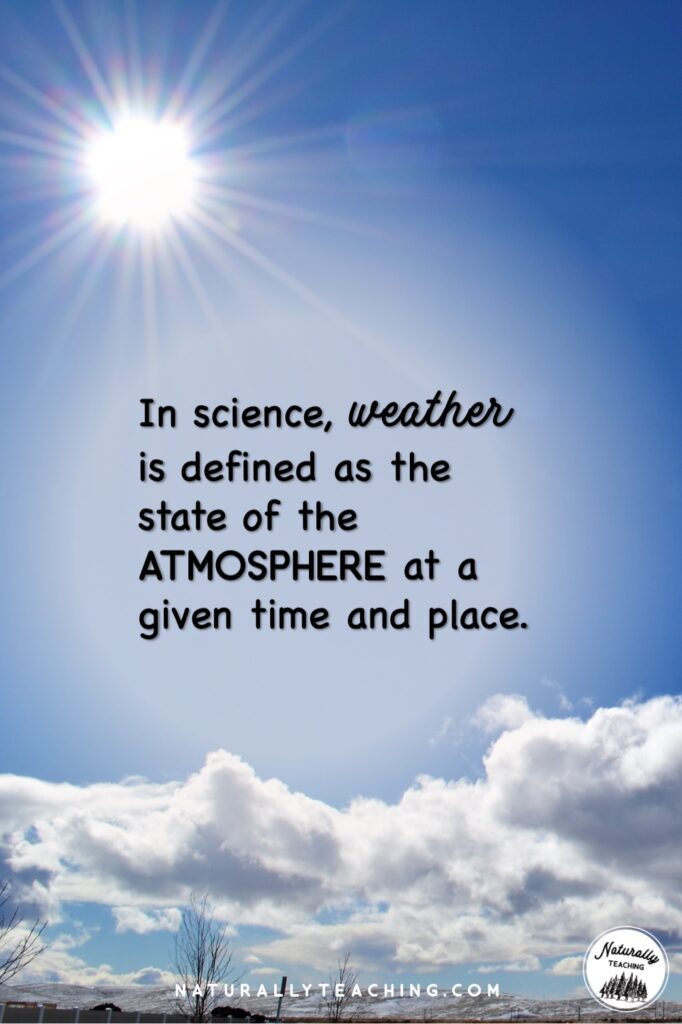
Now that we know what weather is, what are the factors that cause weather? According to the National Centre for Atmospheric Science, there are six factors that make weather occur.
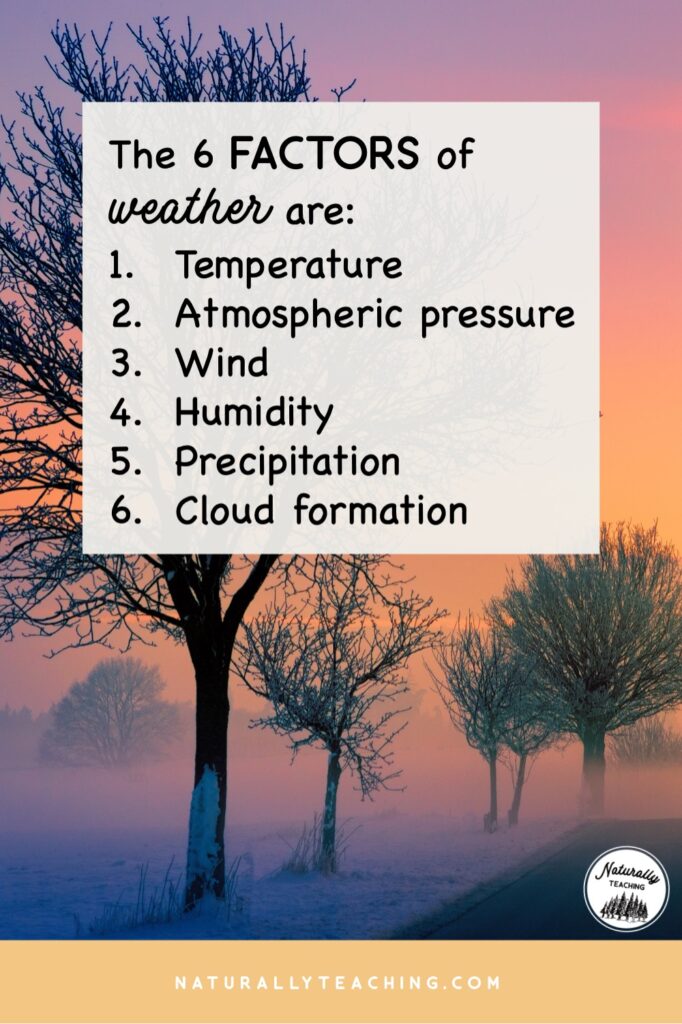
If you Googled this question there would be a slew of conflicting information. This is because “weather” is dependent on the location you live, the climate you have, and the conditions of the atmosphere at a give time. However, if you Googled “what are the different types of weather conditions?” you would likely get the answer that you were looking for.
The types of weather conditions are sunny, cloudy, windy, rainy, snowy, and foggy (“Climate Versus Weather”, n.d.).
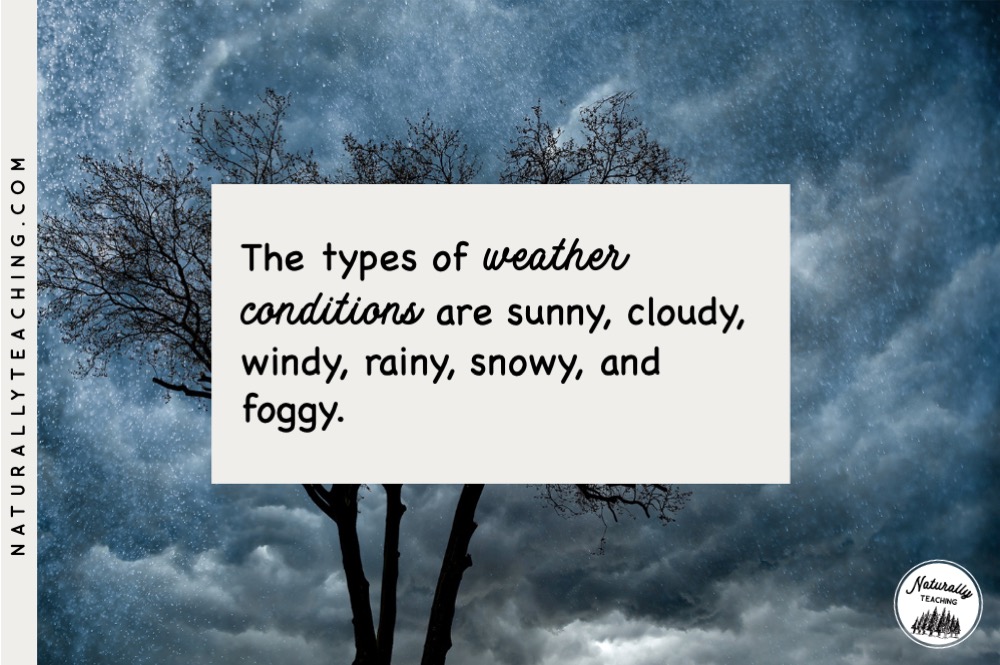
If you Googled this question, it would also bring up a variety of information. This is because the answer is dependent on where you live and the weather you experience. Your weather unit will come in handy here because your students can determine your local weather patterns from the data they collect with this free weather wheel and other weather collection tools. You can consider what the definition of a weather pattern is to be able answer this question as a class.
A weather pattern is when the weather maintains consistency for a period of time (M.V. 2019). If your city, for example, has experienced dry weather of about 72ºF for the last five days, that is a weather pattern. If it were to rain on the sixth day, the weather pattern has ended and a new one has possibly begun.
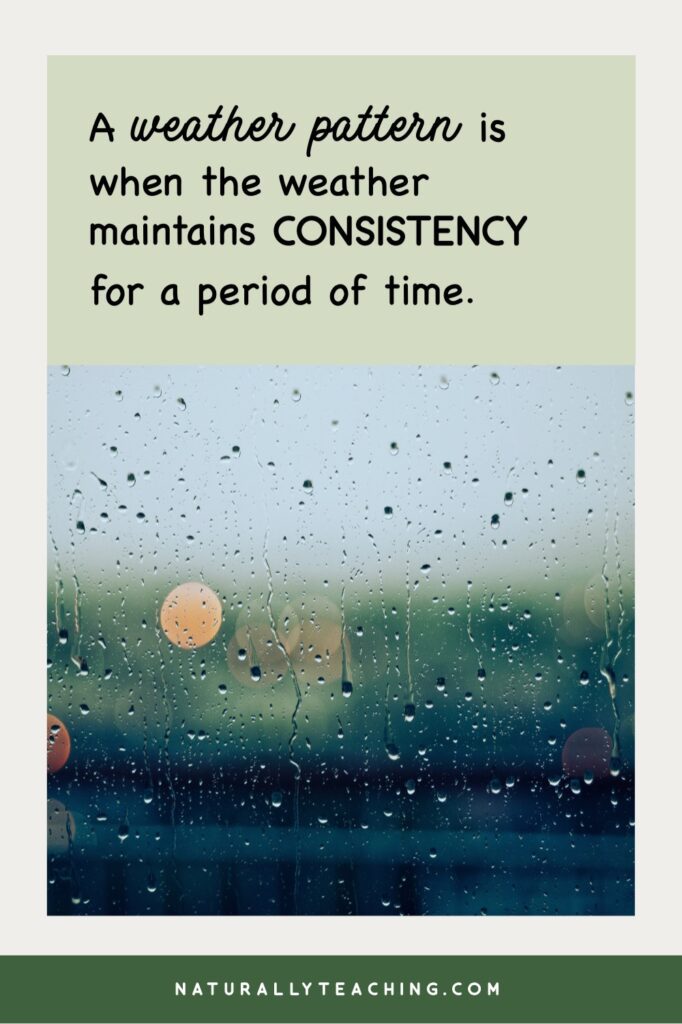
Unfortunately, due to the fluidity of atmospheric conditions, weather can change within hours or even minutes (“Climate Change Indicators,” 2022). Since weather is created by the mixture of the six factors covered earlier, these systems are very complex and small changes can create a shift in the weather we feel. This is why our weather forecasts are ever changing and why you should only take extended forecasts with a grain of salt. Because of this uncertainty, weather teaching is very important to building life skills for your students. Having an understanding of weather will equip them with good judgement in their teenage and adult years.
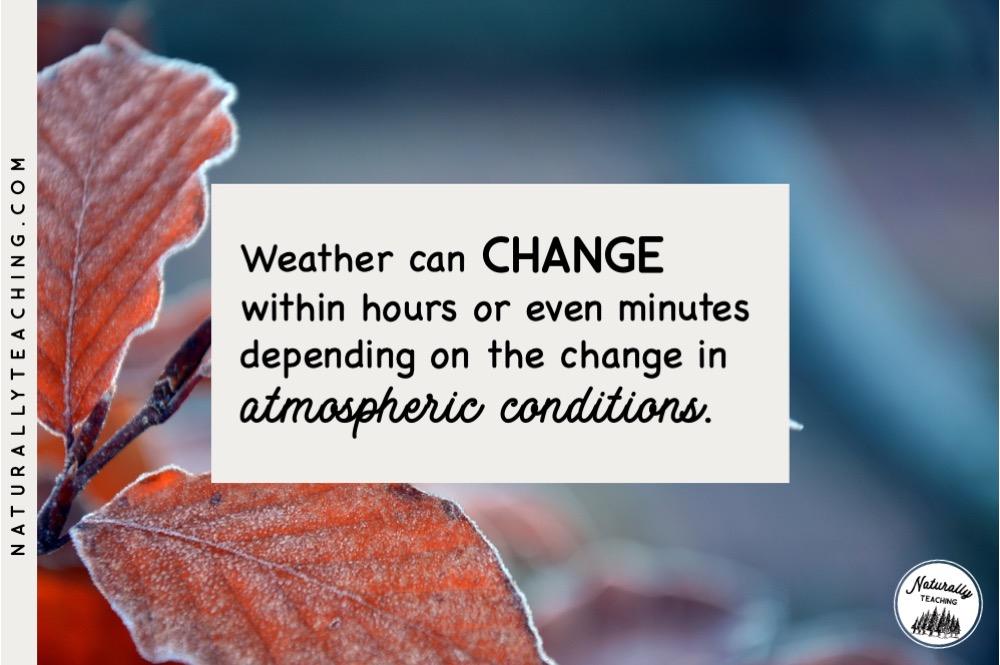
If you’re a 3rd grade teacher using the Next Generation Science Standards in your class, you are in charge of weather teaching as well as teaching about climate.
Climate is defined in science as the prevailing weather conditions in a location over several decades, usually at least 30 years. To put it in a child-friendly way, climate is the collection of weather patterns found in a place over a long period of time.
It’s hard to differentiate between climate and weather for adults, let alone for children. If you explain it to them in the context of an analogy they may understand better. The EPA gives a great analogy of clothes that your students may be able to relate to.
☁︎ The weather influences what clothes you decide to wear each day. You want to be comfortable, so you check the forecast and pick appropriate clothes. Climate dictates what kind of clothes you have in your closet and dresser since you have an idea about what the weather may include in each season.
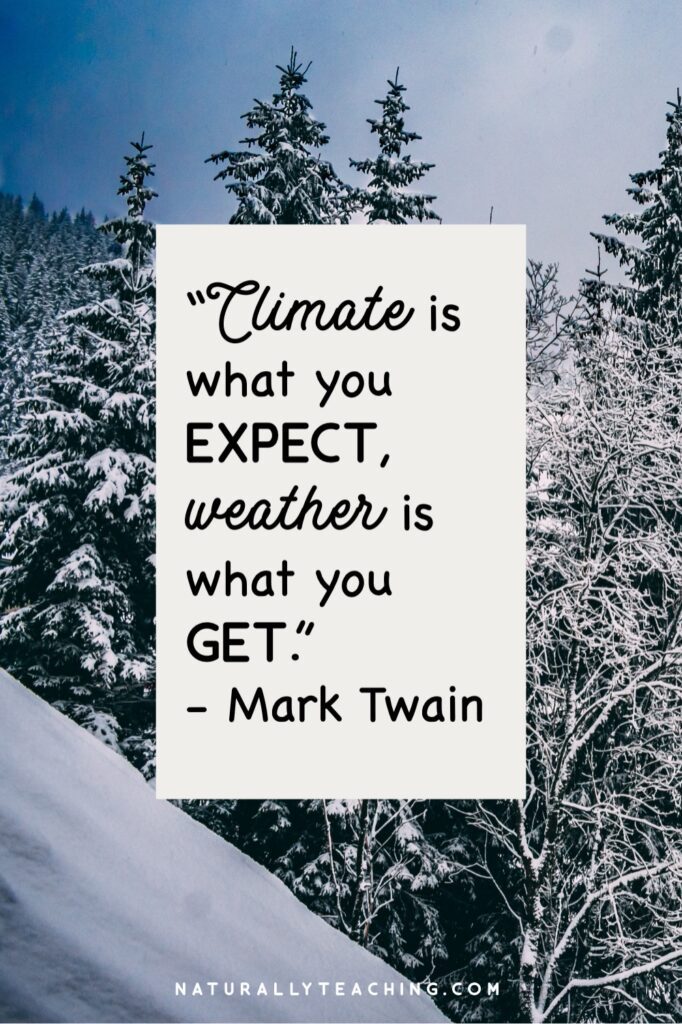
Weather teaching wouldn’t be complete without understanding how everything ties together. When you’re thinking about the hierarchy of seasons, weather, and climate there are two ways you can think about it.
One way to organize your understanding would be to think about what causes what. Climate depends on where you live on the Earth. If you live towards the poles, you will have much colder temperatures on average than if you live near the equator. If you live near the equator, you’re going to have much warmer temperatures on average than if you live in the temperate zone. Also, if you live near water, your temperatures won’t fluctuate as much. If you live in the mountains, your atmospheric pressure will affect your overall weather conditions.
Now that you understand how climate can affect weather, let’s look at how weather and seasons are related. Seasons are the cycles of weather changes. These are predictable year to year. While some days in fall may be hot, most days are cool. In this example, the weather is the temperature (hot) you experienced that one day, but the season is the average weather pattern that is repeated year after year (cool weather).
(If you’re unsure of the way that seasons are made, check out this article “A Helpful Introduction for Teachers Teaching the Four Seasons in School.”)
A second way you could think about how seasons, weather, and climate are connected to each other is by the time periods they are measured in. While climate is measured in terms of decades, seasons are measured in terms of months. Weather is often measured in hours or days.
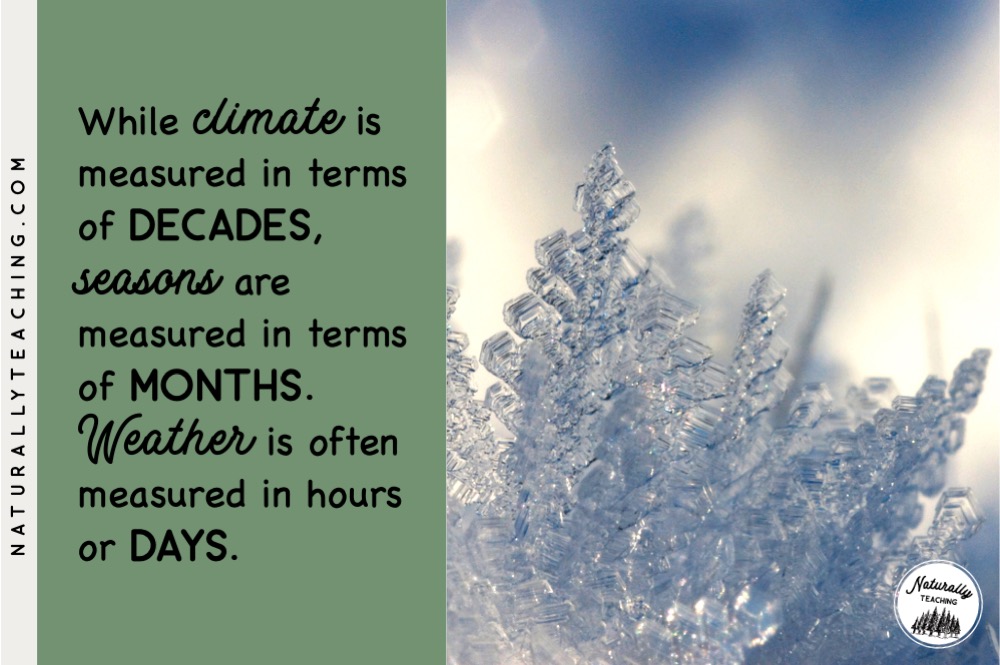
Hopefully these answers helped you feel prepared to take on your weather units. Are you looking for activities and tools to help you with your weather teaching this year? Check out Naturally Teaching’s weather resources and snag your free printable weather wheel!
Bibliography
Climate Change Indicators: Weather and Climate. (2022). Retrieved from https://www.epa.gov/climate-indicators/weather-climate
Climate Versus Weather. (n.d.). Retrieved from https://www.weather.gov/climateservices/CvW
V., M. (2019, April 29). Weather Patterns. Michigan Weather Center. Retrieved from https://michigan-weather-center.org/weather-patterns
What Causes Weather? (n.d). Retrieved from https://ncas.ac.uk/learn/what-causes-weather/#:~:text=Weather%20is%20made%20up%20of,ripple%20effect%20around%20the%20world
Have amazing ideas on how to up your weather teaching game? Get some conversations started by including them in the comments below!
2 thoughts on “Answers to 7 FAQs to Help with Your Weather Teaching in Elementary School”